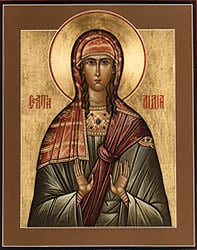A spiritual initiative began in 2012 that has since spread quietly around the world. It was the Pilgrimage of the Icon of Our Lady of Częstochowa.
Thirteen years ago, the “From Ocean to Ocean” initiative began. This involved a copy of this icon, also known as the Icon of the Black Madonna, travelling over 220,000 km through more than 32 countries worldwide. The name “From Ocean to Ocean” reflects the journey that began on the Russian coast of the Pacific Ocean and continued through various European countries before reaching the American continent, where it stopped in several locations from north to south.
The organizers, Human Life International (HLI), whose main mission is to defend human life, aim to unite people around the world in prayer for life and draw attention to the sacredness of every human being.
The original icon of Our Lady of Czestochowa is venerated in the Shrine of Jasna Góra in Poland. According to tradition, the original icon was painted on a wooden board from the table of the Holy Family by St. Luke the Evangelist, a contemporary of the Virgin Mary who painted her true face. In 1382, the icon was brought to the Shrine of Jasna Góra in Częstochowa by Prince Ladislaus of Opole.
This miraculous image has always attracted pilgrims from Poland and around the world, as evidenced by the numerous votive offerings in the sanctuary where it is kept. The liturgical feast of Our Lady of Czestochowa is today, August 26th.
Mrs. Ewa Kowaleska created a copy of the icon, marking the beginning of a worldwide pilgrimage in favor of life. On January 28, 2012, leaders of pro-life movements from sixteen European and Asian countries—Ukraine, Belarus, Lithuania, Latvia, Russia, Kazakhstan, the Czech Republic, Slovakia, Hungary, Austria, Switzerland, Spain, Italy, Poland, Portugal, the United Kingdom, and the United States—gathered at the Shrine of the Black Madonna in Jasna Gora for a solemn Mass. During the Mass, the copy of the icon touched the original and was blessed with pro-life intentions.
Icons and Their Meanings
The word “icon” comes from the Greek word for “image.” In the Byzantine Orthodox tradition, sacred images are considered to be real encounters between God and man. Theologian and historian Professor Emanuela Fogliadini states:
The icon is never considered an appropriation of the subject depicted. In fact, it is the opposite: the icon is the place of an exceptional encounter, which is always offered by the prototype represented. Often treated in the West as mere works of art, icons have an aesthetic dimension, but their foundation is theological. They convey divine revelation and attest to the dogma of the incarnation of the Logos of God.
In summary, we can say that the icon is “theology in images.” The conception of the icon as a window open to the sky . . . emphasizes the icon’s liturgical, revelatory and theological role, the foundations of which were established at the Seventh Ecumenical Council (787).
The “writing” of an icon is a spiritual act in which the iconographer conveys the Christian message by following rules agreed upon by the ecclesial community, thereby avoiding personal interpretations. Obedience to the canons ensures that divine truth emerges rather than individual truth, and aesthetic importance is secondary to the icon’s function of mediating the divine mystery.
The iconographer, who “writes” the icon, is like a prophet announcing the mystery of God. It is important not to focus too much on the iconographer or their artistic skills, but rather on the message they wish to convey through the icon. The iconographer’s work serves the community of the faithful, which is why they do not sign their work.
A Sign of Hope
The icon of Our Lady of Czestochowa is a unifying symbol for Catholics and Orthodox Christians in both the East and the West. This initiative aims to promote family values and seek Mary’s intercession in combatting issues such as abortion, population decline, and the erosion of Christian values in today’s society.
The “From Ocean to Ocean” pilgrimage is taking place at a time when the culture of life is under severe threat. The increasing prevalence of practices that undermine human dignity necessitates a powerful call to prayer, faith, and solidarity. The presence of the icon is a symbol of motherly hope, capable of uniting people in dialogue and commitment to defending life.
The pilgrimage continues in Italy this year, 2025. The icon arrived in Milan from Ecuador and was welcomed at the Sanctuary of Sacro Monte in Varese. The next stop was at the Sanctuary of Loreto, where the House of Mary Mother of Jesus is located, transferred from Nazareth to Loreto. Next, the icon arrived at the Church of the Sacred Heart of Jesus in Tolentino. Many people participated in this event with faith, praying devoutly before the icon.
The final destination was Rome. It was highly significant that the icon was present in Rome during the Jubilee of Hope. This ought to encourage us to entrust ourselves with greater confidence and enthusiasm to Mary’s maternal and loving help.
This initiative offered all participants the precious opportunity to remember that, when facing challenges to defend life and human dignity, we are never alone.
Image from Wikimedia Commons















